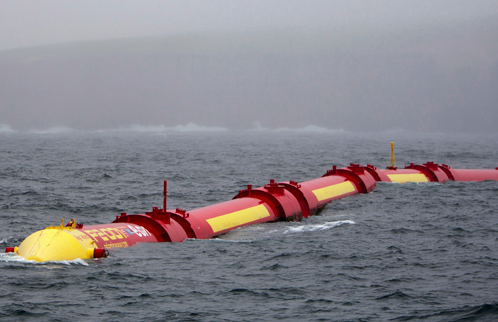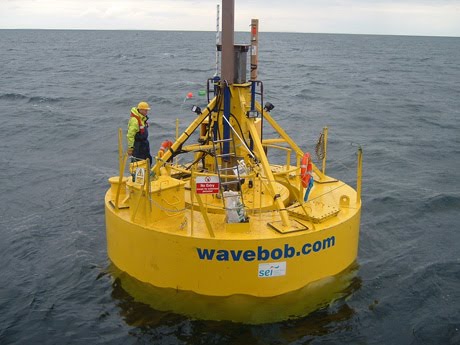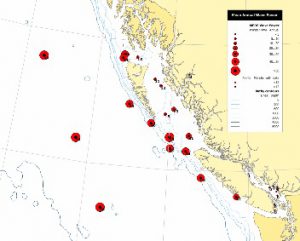Wave Energy

As wind passes over the surface of the ocean, it creates waves.
Ocean waves contain enormous energy potential. Wave energy devices can generate energy from the surface motion of ocean waves or from pressure fluctuations below the surface.
In many places, the wind blows with enough consistency and force to provide continuous waves along the shoreline. This is wave energy’s critical advantage: it’s possible to generate energy all the time. And while energy output levels will vary, they can be forecasted: wave power can be predicted several days in advance.
A wave’s energy comes from its velocity, height, length, water density, and speed. Like tidal, power output is a function of the cube of the velocity, and so as water speed doubles, the potential power increases.
Wave technologies can be used anywhere there are waves: either close to shore or in distant offshore locations. Practically, the most economic location is close to shore where it’s cheaper to deliver power to the grid, or directly to remote coastal communities.
Another bonus: wave energy is most intense in winter months, when Canadian energy needs are highest.
Technology
A common approach is to capture a rising wave in a chamber. As the water rises, it forces the air out of the chamber; the air spins a turbine.
There are a number of compelling wave technology solutions, including:
Attenuators: Surface flowing devices that are long, multi-segmented structures that float parallel to the direction of the waves. They ride the waves like a ship, extracting energy by using restraints at the bow of the device and along its length. The segments flex as waves move at differing heights along the length of the device; these segments are connected to hydraulic pumps or other converters to generate power as the waves move past.

Oscillating Water Column: Water enters through a subsurface opening into a chamber, trapping air above. The wave action causes the captured water column to move up and down like a piston, forcing the air though an opening connected to a turbine to generate power.

Overtopping: Operating somewhat like a floating tidal lagoon, an overtopping wave device creates an offshore water reservoir as incoming waves fill up its holding chambers. As the water is released, it flows back out through a turbine that drives a generator.

Point Absorber: Floating structures that use the rise and fall of the wave height at a single point for energy conversion. The up-and-down bobbing motion from passing waves is used to drive electromechanical or hydraulic energy converters to generate power.

Canadian Resource

Canada is a powerhouse in wave energy potential. The National Round Table on the Environment and the Economy estimates the extractable potential for wave power at up to 16,000 MW. While there is significant wave energy potential on Canada’s east coast, the near-shore wave potential on the west coast is the largest and most practical opportunity for development in the near future.
British Columbia (BC) has a number of active Canadian wave energy technology developers including Accumulated Ocean Energy (AOE) and Neptune Wave Power. BC has funded two wave energy technology projects: SyncWave Energy Systems and the Pacific Coastal Wave Energy Corp., both located off the west coast of Vancouver Island. Several other potential wave farm development sites in the province are also under investigation.
Some of the key organizations involved in Canada include:
- West Coast Wave Initiative (WCWI): A team of academics, government and private sector engineers working in collaboration to thoroughly investigate the wave resource of the west coast of Vancouver Island, including wave energy resource assessment, dynamics simulation of offshore systems and integration of renewable energy technologies.
- Wave Environment Research Centre (WERC): Located in Burin Bay Arm, at the College of the North Atlantic (CNA), the WERC was established to conduct research on the use of ocean wave energy to supply sea water to land based aquaculture.
WATCH: R&D activities led by West Coast Wave Initiative in British Columbia
